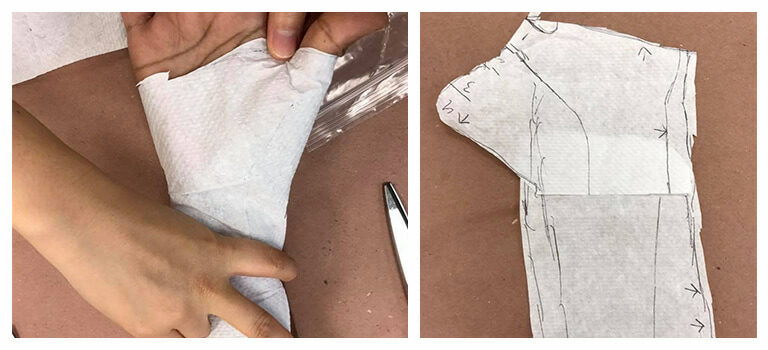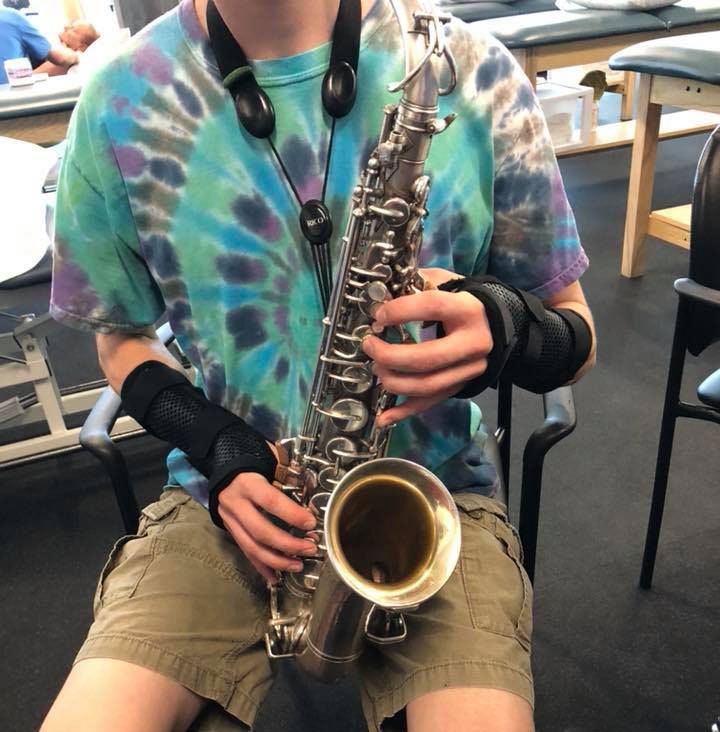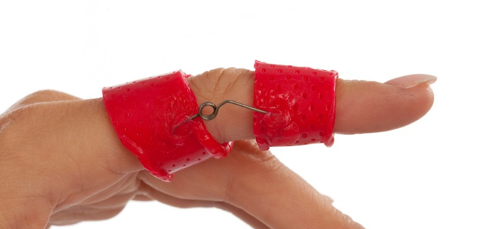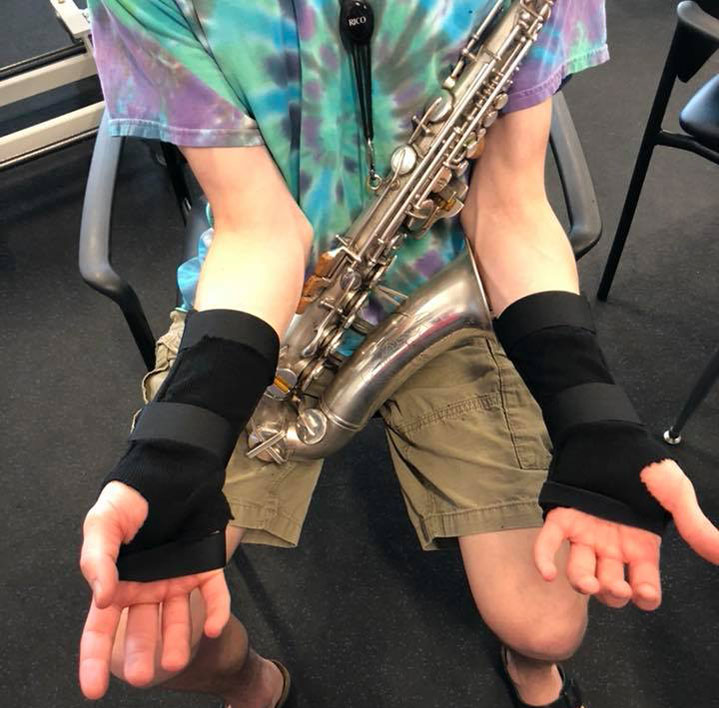
Orthotic Fabrication for Musicians
How to help musicians who experience strain or injuries?
While music brings us many joys, playing instruments can also bring us some discomfort. Due to hectic and long practice sessions, musicians may experience different types of repetitive strain or overuse. We see injuries such as carpal tunnel syndrome, tendinitis, or be bothered by arthritis in the finger joints. Some musicians may even have to stop playing their beloved instruments due to these issues.
How we can help
Fortunately, there are a number of ways in which therapists can help musicians. Starting with recommending stretches and taking frequent breaks in between playing. Therapists then can provide exercises to improve posture and finger dexterity, as well as the fabrication of custom orthoses. Which may be very beneficial to both professional and amateur music makers. These custom-made orthoses can both support the musicians during play and/or help them to recover afterward.
Below, is an interesting story of a musician patient who benefited considerably from a treatment with custom-made orthoses.
Afterward, we offer some guidelines and tips for fabricating effective orthoses for musicians.
Helping a saxophonist in pain

Josh MacDonald MS OTR/L CHT, from Hand Therapy Partners in Phoenix, AZ shared the following story of one of his patients:
The patient is a twenty-year-old saxophonist, who has been playing his saxophone for more than 8 years and is now headed to college to get a degree in music. He also teaches saxophone and clarinet to high school music students.
Unfortunately, the saxophonist had been experiencing significant lateral epicondylitis and radial tunnel pain bilaterally after prolonged periods of playing. He admitted that he holds his hands and forearms under excessive tension when playing.
Protocol
Therapist MacDonald offered to start with some simple measures at first.
- He told the young man to take frequent breaks,
- do warm-ups and cool-downs after extensive playing,
- and to consider the possibility of using supportive bracing when not playing.
While these measures did have a moderate impact, the patient still experienced significant pain after long sessions of play.
The therapist then decided to try a different approach and fabricated two custom orthoses molded into the patient’s primary playing position for his alto saxophone. The young man held his instrument as he would during active play, and the therapist molded the orthoses in this posture. This led to an atypical wrist and forearm position for typical orthotic fabrication, but the orthoses support this particular patient during play, without limiting his finger reach and mobility.
These custom-made orthoses now allow the patient to play with less tension in his forearms and wrists.
Outcome
The patient was able to try out the orthoses for 2 weeks prior to leaving for college. He reports that the splints relieve his pain and that they support him during long periods of practice.
He will not be able to wear them during performances, but they do now enable him to practice for longer periods of time without pain.
Tips and Guidelines
Key Points for treating musicians:
- Keep in mind that every musician is unique and that he/she must be evaluated carefully to determine what kind of orthosis might be of benefit. Have the musician bring their instrument to the clinic for the evaluation. Check how the musician sits and how they hold their instrument. Keep in mind good posture and ergonomics during your assessment.
- Give each musician individualized warm-up and cool-down exercises.
- Advise the musician to maintain good posture while playing and to take frequent breaks while practicing their instrument.
- Orthoses can be molded for both rest and for alleviating symptoms during play.
Treating a musician with an orthotic intervention may be similar to the approach used for athletes.
They might benefit from a less restrictive orthosis for playing and another more restrictive orthosis for periods of rest.
- Making adaptations to the instrument can be very helpful as well as long as this does not interfere with the sound quality.
Guidelines regarding the fabrication of orthoses for musicians:
- The orthosis should limit motion as little as possible and should not interfere with the body motions of playing.
- Try to fabricate a lightweight orthosis. We suggest using Orfilight, Orficast or Orficast More thermoplastic materials.
- Make sure the orthosis has minimal or no strapping.
- The orthosis should conform closely to the anatomy. Use a product with high drapability.
- Avoid unnecessary parts or protrusions.
- When the playing orthosis is worn it should not touch the instrument or interfere with its moving parts.
- Take care that the orthosis does not make any bothering noises.
Reference:
Johnson, C. D. (1992). Splinting the injured musician. Journal of Hand Therapy, 5(2), 107-110.
![]()

Written by Debby Schwartz, OTD, OTR/L, CHT
Physical Rehabilitation Product and Educational Specialist at Orfit Industries America.
Debby is a certified hand therapist with over 36 years of clinical experience. She completed her Doctorate of Occupational Therapy at Rocky Mountain University of Health Professions in 2010. She has worked at Orfit Industries America as Product and Educational Specialist since 2007.
Debby is also an adjunct professor at the Occupational Therapy Department of Touro University, School of Health Sciences, and at the Occupational Therapy Department at Yeshiva University, Katz School of Science and Health in NYC. She has written many book chapters in the field of hand therapy and multiple articles for hand therapy journals, including the ASHT Times and the Journal of Hand Therapy. She has published a new textbook on orthotic fabrication together with Dr. Katherine Schofield, entitled “Orthotic Design and Fabrication for the Upper Extremity: A Practical Guide”.
![]()




